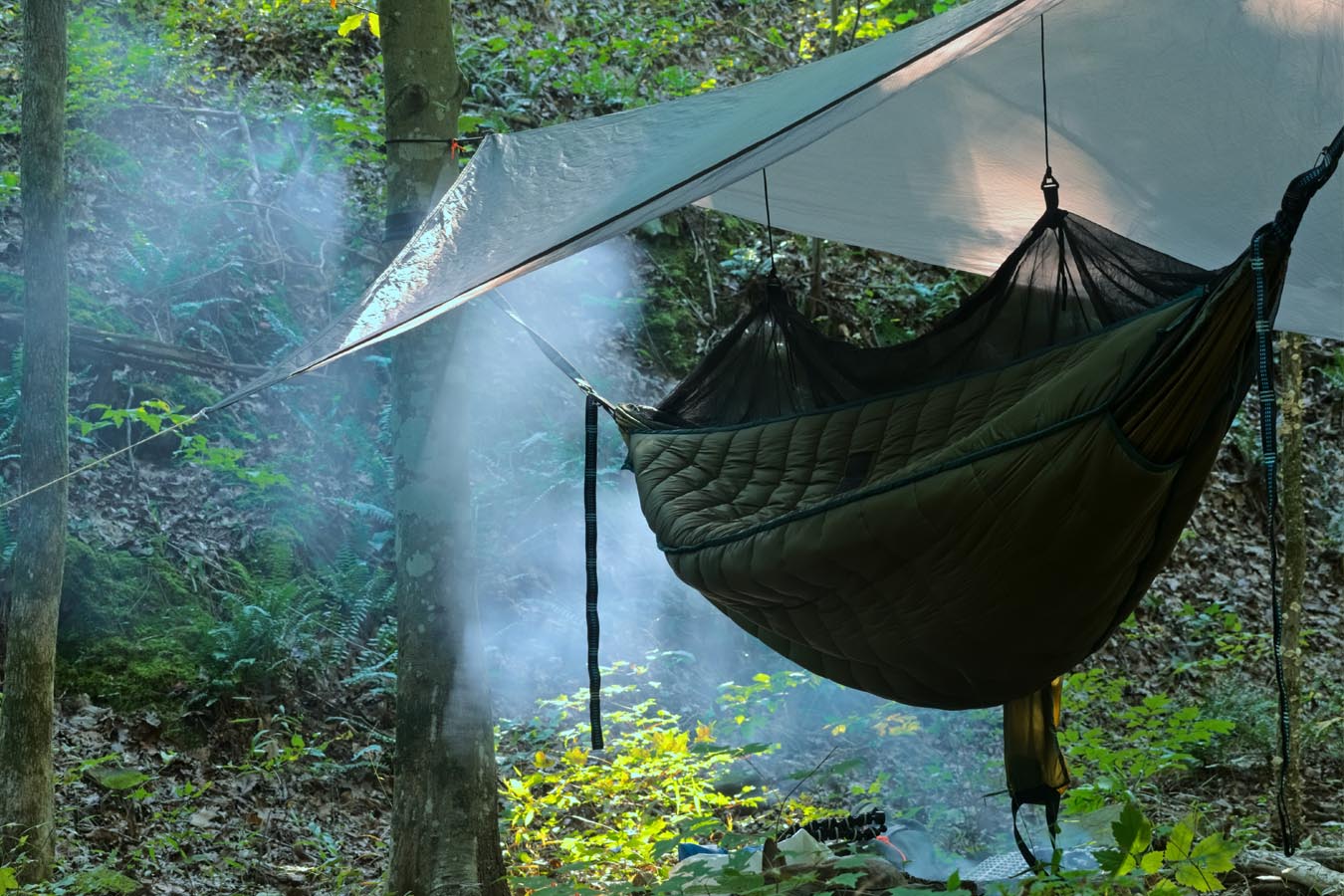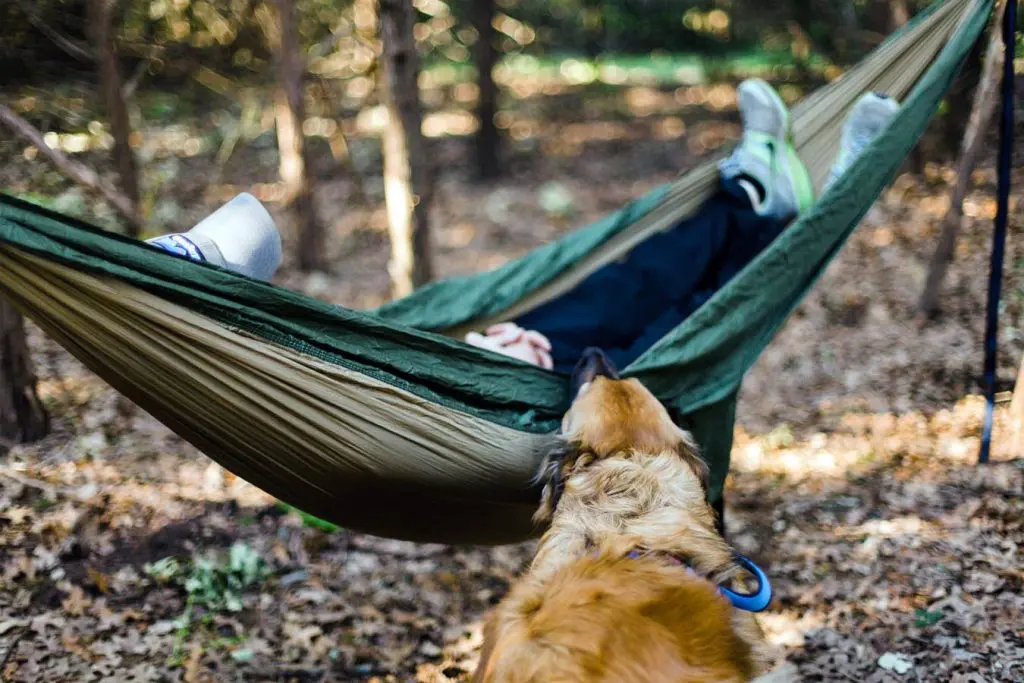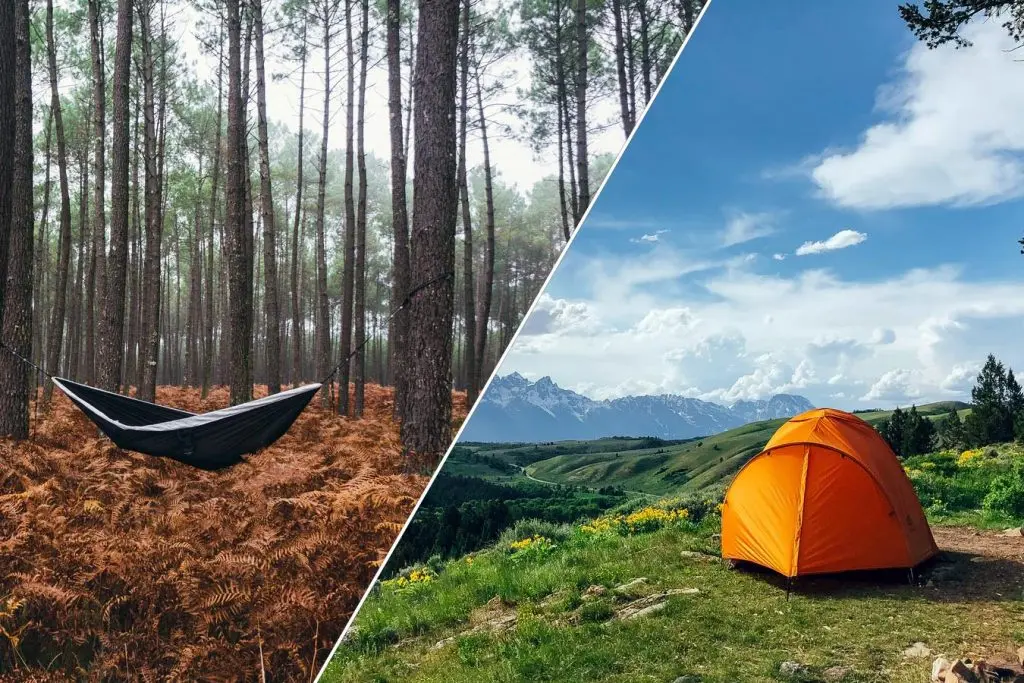Hammocks are great when camping out in summer. However, the fun can quickly disappear when the weather changes from warm to cold. When the temperatures get cooler, you need to find a way to insulate your hammock and retain your body heat within the hammock.
There are various methods to insulate your hammock, all of which we discuss below.
How do you insulate a hammock?
Hammocks are awesome when it’s warm. They work best for summer campers who want to stay suspended as they enjoy the breeze. However, winter campers also love using them. But there’s one problem with this.
During the night, when temperatures drop (this happens in some places, even in summer), the experience can get pretty uncomfortable. But what can campers do? There are ways they can explore to insulate the hammock. Here are some of these ways.
Types of hammock insulation
Underquilts
Hammock underquilts are a great insulation option. They hang from the long ends of a hammock and swing under it to envelope your back and the sides of the hammock. Underquilts are a great option because they come in different temperature ratings. However, they cost a pretty penny and may not be the best choice for folks on a budget. However, they are easy to pack because they compress well. You don’t have to find extra space or carry extra luggage on your trips.
You can find underquilts in any length you want. They can also extend to act as double hammock underquilts. Some are large enough to enclose the entire hammock, including the upper area.
Pros
- They are lightweight
- They are superb at insulating against cold weather
- They take less space
Cons
- They are expensive
Pads
Unlike underquilts, sleeping pads go with you into the hammock. Pads provide a layer of air between you and the cold weather keeping you warm. There are two types of sleeping pads that you can use to insulate your hammock from the elements; foam sleeping pads and inflatable sleeping pads. Most people prefer foam sleeping pads because they are cheaper and will stay stable for a while. However, they don’t offer as much comfort as inflatable sleeping pads. But that’s probably the only advantage they have over foam sleeping pads.
While it might be cozy to have inflatable sleeping pads within your hammock, things can turn around pretty quickly if there’s a hole in the pad. However, many brands recognize the chances of this happening and provide patch kits to fix any hole immediately.
Sleeping pads generally provide good insulation. However, they have certain disadvantages that you should be aware of. For starters, sleeping pads tend to shift underneath your hammock as you twist and turn at night. Most people place the pads inside their sleeping bags to prevent this. Other times, sleeping pads simply don’t insulate the sides of the hammock, leaving you exposed. This especially happens when your hammock is tight on the sides. A quick solution would be to add wings to the pads. The pads stick out to the sides and keep your sides warm. Some pads come with extra flaps. If you don’t have flaps on your pads, you can improvise by attaching standard foam boards using duct tape.
Pros
- Foam pads are cheaper than underquilts
- Inflatable pads provide extra comfort
- They can be used inside a sleeping bag
- They can be improvised to suit different situations
Cons
- They shift underneath and expose your underside during the night
- Foam pads tend to cause condensation at night
- Some only insulate the underside
Warm Clothes
The idea is to stay warm at night as you camp in your hammock. Whatever means you use to achieve this is welcome. Warm clothes are an insulation option that many campers implement even when sleeping on the ground inside a sleeping bag. You can invest in affordable warm clothes to cover your entire body and keep you from freezing at night.
Some people wear a balaclava or warm hat to cover their heads. You can also get insulated hoods that provide warmth during the cold weather. Some of the materials used to make such hoods can be used to cover the top of your hammock and keep it insulated. You should also invest in gloves and insulated bootie clothes. If you can find the right clothes, you can increase the warmth within your hammock at night.
Pros
- Warm clothes are a cheap improvisation
- Warm clothes will not shift as you sleep and guarantee warmth throughout the night.
- They cover your entire body
Cons
- Sleeping in heavy clothing can be uncomfortable
- Some clothing may be expensive
Top Insulation
What if you are short of space and still need to keep warm in your hammock? Most people indeed prefer to use a sleeping bag or a synthetic camping blanket, or a fleece blanket. However, top quilts are the insulation you need if you don’t have the space luxury in your hammock. Viable alternatives still apply even with top quilts if you can afford the space within your hammock.
Top insulation quilts are hoodless and weigh less compared to sleeping bags and camping blankets. If you want, you can get one with different temperature ratings. Also, they tend to have a foot box and drape over your body like a blanket. It doesn’t matter what position you choose to sleep in, most quilts will stay in place. If you want to move out of your hammock at night, you can easily move them.
Pros
- They are lighter than camping blankets and sleeping bags
- They come in different temperature ratings
- They take up less packing space
- They drape over your body like blankets and provide sufficient insulation against old weather.
Cons
- Some are expensive
- It’s more convenient to use a sleeping bag or camping blanket
Hammock through a sleeping bag
Underquilts may cover the underbelly of your hammock and wrap the sides of it, sleeping pads may be cheaper, warm clothes may be great, and top insulation quilts may cover the top from the elements. However, a simple solution may come in handy when you need to keep the warmth inside your cuddled hammock. In this case, slipping your hammock through a sleeping bag could be all you need.
You can do this by opening a tiny section at the foot area of your sleeping bag and slipping your hammock through it. You then create some sort of hammock-sleeping bag burrito that insulates you from the cold. What you have now is an underquilt and top quilt hammock. However, you may need a helping hand to zip the bag once you are inside. Also, you will need to tighten the ends of the sleeping bag to keep it wrapped. Ensure you tie the hood area of your sleeping bag tightly to your hammock to avoid letting the cold air in at night.
Pros
- Convenient if you can’t afford both an underquilt and a top quilt
- Keeps your hammock warm through the night
Cons
- Not suitable when you are camping alone.
- Fastening the hammock to the hood of the sleeping bag is tricky
Wind Protection
A wind protection tarp could also be a great way to keep the cold away from your hammock comfort. A tarp can also prevent rain from hammering down at your hammock, disrupting your comfort and damaging your hammock. For insulation, you want to ensure the tap is close to the ground or create doors to create a cocoon-like structure for your nap area.
Another option would be to get a hammock with an over-cover. The cover layers over the top to keep your body temperature within the structure and keep the cold away. An over-cover is an awesome insulation option, especially if you are hammock-camping during very cold conditions. Some people get winter socks that drape over their hammocks to keep them warm inside.
Pros
- Great improvisation that protects from various elements
- It’s a cheap option
Cons
- An over-cover may be expensive
- If the winds are too strong, the tarp may not hold
Reflective Blanket
Reflective blankets are meant to reflect the body heat back to you. The most common example of such a blanket is a Mylar blanket. Mylar blankets aren’t just common with campers trying to keep the elements away, they also aid marathon runners, emergency personnel, and outdoor lovers. Mylar blankets are cheap and light and provide the insulation you need during a cold night in your hammock.
The thin plastic used to make the blanket acts as a heat shield. You can wrap the Mylar blanket around your sleeping bag. Or, you can also use some to cover your body as well. If you have some left, you can use it to make a rain fly and keep out rain and wind from your hammock.
Pros
- A reflective blanket retains up to 90% of your body heat
- It’s cheap
- It’s lightweight
- You can use it to create a tarp to keep the wind and rain out
Cons
- It’s a vapor barrier that will cause condensation
- As a tarp, it only keeps away light rain because of its lightweight nature
Summary
Sleeping in a hammock is fun. Once you try it, it’s the most fun way to sleep during camping. However, things get tricky when the weather changes from warm to cold. How do you insulate your hammock from the cold?
We just mentioned a few ways to make things work as you camp. All these methods are easy to create and maintain. Remember your needs come first before you pick the appropriate method to insulate your hammock. Have fun hammock-camping.




